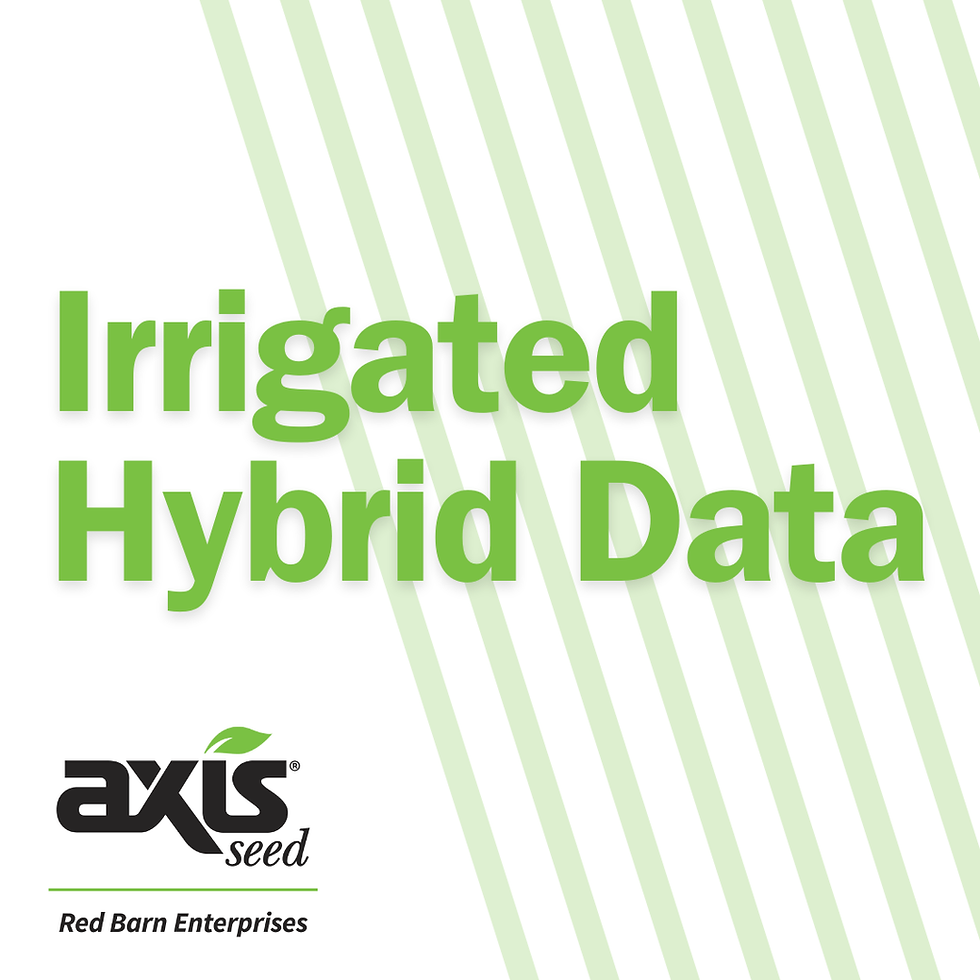Building Your Max Yield System Plan – Step 2: Dialing in the Decisions
- Red Barn Enterprises
- Oct 3
- 3 min read
The data is in—now it’s time to make the decisions that build yield. In this Stalk Talk, we show how to dial in your hybrid placement, fertility, and crop protection plans on a field-by-field basis to maximize ROI and reduce stress in 2026.
In our last Stalk Talk, we discussed the importance of starting early with your Max Yield System Plan by gathering data, building field-by-field crop plans, and setting the foundation for 2026. Now it’s time to move from strategy to actionable, field-specific decisions.
This is where the plan gets dialed in and where the real yield and ROI are built.
Hybrid Placement: Right Hybrid, Right Field
Action Steps:
Rank Hybrids by Bu/1000 Plants: Use your historical hybrid performance data to identify the most efficient hybrids in your lineup.
Match Hybrids to Soils: Place drought-tolerant hybrids on lighter soils, high-response hybrids on your best ground, and disease-tolerant hybrids in fields with consistent disease pressure.
Diversify Maturity: Spread relative maturities across your acres to manage risk and spread out harvest.
Trial New Options: Identify a few fields where you can test new hybrids in strips or side-by-sides. This gives you confidence to adjust your portfolio moving forward.
Hybrid placement is where yield potential is either capped or unleashed, this is the decision that ties together crop protection and fertility plans for maximum ROI. Making a field by field plan for hybrid placement is the number one way to maximize yield during the planning process. Matching the right hybrid to the right field isn’t just cliche, it’s what top producers do to make sure they produce Max Yield on every acre of their farm, and now's the time to create the hybrid by field plan to create Max Yield on every acre of your farm for 2026.
Biological & Fertility: Match Inputs to Soil Potential
Action Steps:
Zone-Based Sampling: Break fields into zones by soil type, slope, or historical yield. Pull soil samples by zone instead of whole-field averages to uncover hidden variability.
Fertility Balance Check: Compare soil test results against yield goals. Where are you short on N, P, K, S, or micros? Where are you oversupplying? Balance for efficiency.
Biological Integration: Decide which fields may benefit from stress-reducing biologicals (e.g., drought mitigation, improved nutrient availability). Prioritize fields with tighter soils or past stress issues.
Fertilizer Application Plan: Map out your application timing: pre-plant, in-furrow, sidedress, or foliar, and match those timings to crop demand curves.
This ensures fertility dollars are placed where they return the most, while biologicals enhance efficiency and reduce risk. Build out the fertility and biological plan on a field by field basis to maximize return on your investment and minimize the stress you have in season wondering if you are providing the crop with everything it needs for Max Yield.
Crop Protection: Targeted, Not Blanket
Action Steps:
Map Weed Pressure: List the fields where resistant weeds are an issue (e.g., pigweed, kochia) and identify rotation strategies or new modes of action needed on a field by field basis..
Disease History Review: Use past yield maps and scouting notes to identify fields that consistently show bacterial leaf streak, gray leaf spot, rust, or other disease pressure. Flag those for proactive fungicide timing.
Insect Hotspots: Identify fields historically impacted by rootworm, cutworm, or other pests. Decide now whether those fields require specific seed traits or in-season insecticide applications.
Timing & ROI Check: Review last year’s spray logs, were applications too early, too late, or unnecessary? Adjust plans accordingly so every pass is optimized next year.
By tailoring your crop protection plan to each specific field, you minimize overspending while maximizing yield response. Dial in those plans on a field by field basis and set up your crop protection strategy now. By doing this you will reduce the stress of making last minute decisions and Maximize Yield in every field.
Why This Step Matters
Dialing in decisions transforms your Max Yield System Plan from a strategy on paper to a real, field-specific roadmap. With hybrid placement, fertility, and crop protection all matched to each field’s unique challenges and potential, you reduce stress and maximize ROI long before the planter hits the field.
What’s Next
In the next editions of Stalk Talk, we’ll dive deeper into each plan and show how data and field experience shape every decision.
Stay tuned as we continue building the plan that builds yield.




Comments